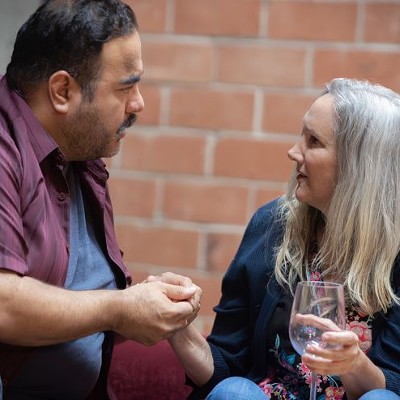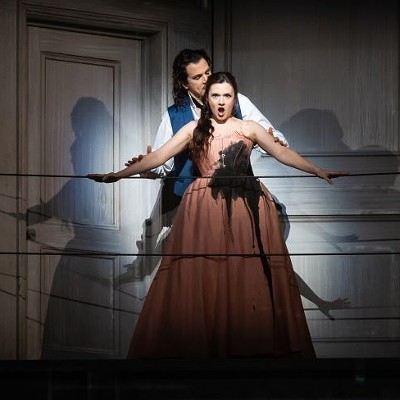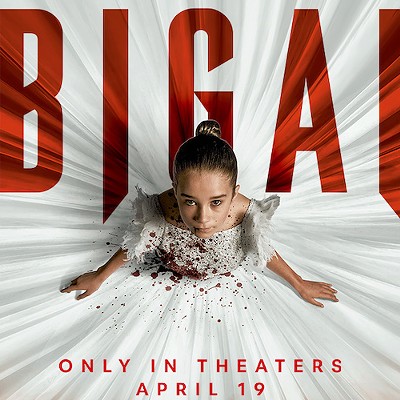As recently as two years ago, Sergey Prokofiev International Airport in the Donetsk region of eastern Ukraine was a modern and viable airport, with several new buildings constructed for the 2012 UEFA European Championship, although local unrest had resulted in a slowdown of international flights. Now the airport is almost completely destroyed, the result of a 242-day battle between the Ukrainian army and pro-Russian militants.
Former Los Angeles Times correspondent and photojournalist Sergei L. Loiko has been covering the revolution in Ukraine since 2013, and he spent weeks at the airport with Ukrainian troops as they defended the structure against Russian-backed rebels.
We've heard about this region in the news before. In July 2014, Malaysia Airlines Flight MH17 crashed after being hit by a Russian-made Buk missile, killing 283 passengers, although Russia denies allegations that it supplied weaponry to the rebels. As many of those on board the flight were Dutch nationals, a 15-month investigation by a Dutch safety board suggested that the airspace above the region should have been closed, citing those instances in the months leading up to the crash when a number of military aircraft had been shot down.
Loiko, who splits his time between Moscow and the United States, is no stranger to war – having covered armed conflicts, wars and revolutions in Romania, Tajikistan, Chechnya, Georgia, Afghanistan and Iraq – but his coverage of the airport in Donetsk affected him deeply. In January 2015, he was awarded The Bob Considine Award by the Overseas Press Club of America for his coverage in the region, and last year he released a new novel based on true facts and events, Airport, published in both Russian and Ukrainian.
Photographs from his 2014 coverage of the airport conflict are on view now at Russian Cultural Center Our Texas in Loiko's “Airport” exhibit, showing gritty, somber scenes from the burned and bombed area of what was once a thriving transportation hub. Those interested in the tools of war will be fascinated by up-close looks at machine guns, tanks and grenade launchers. For the most part, the shots taken in the airport are dark and dismal, with broken windows, blackened walls and a general absence of life. The only pops of color are the images where troops are unloading bright blue bottles of water from supply trucks.
The exhibit also includes scenes from the neighboring villages of Slovyansk and Kramatorsk, where everyday life coexists with the revolution. The bright green grasses of the countryside are punctuated by heavy, black tanks rounding the bend on a dirt road in one photograph. In another, a local woman herds her goats across a street and, in the background, a defensive barrier wall has been erected using abandoned tires and debris.
Because war is often an abstract concept for those who only read about it in the news, Loiko has taken care to photograph the faces of these young Ukrainian soldiers as they wait anxiously for the next onslaught. There is one brutal photograph in which the remnants of a Ukrainian tank crewman are being boxed up in a crate. It's not even a body – just some meaty tissue – but his fellow soldiers are salvaging what they can for the deceased soldier's family.
Are there bad guys and good guys in this conflict? The answer depends on whom you ask. Without being too general, many of the Russian-speaking eastern Ukrainians feel that Russian president Vladimir Putin is a hero, while many of those who reside in western Ukraine feel that their country has been invaded. What seems indisputable, however, is that Russia is not honoring the 1994 Budapest Memorandum, and has broken its promise to respect the existing borders of Ukraine.
Airport continues through April 30, at Russian Cultural Center Our Texas, 2337 Bissonnet, open Mondays to Fridays 8:30 a.m. to 5 p.m., Saturdays 11 a.m. to 3 p.m., 713-395-3301, ourtx.org.
Support Us
Houston's independent source of
local news and culture
account
- Welcome,
Insider - Login
- My Account
- My Newsletters
- Contribute
- Contact Us
- Sign out
Houston Photography Exhibit Captures Horrors of Modern-Day Conflict
Susie Tommaney March 17, 2016 7:00AM
[
{
"name": "Related Stories / Support Us Combo",
"component": "11591218",
"insertPoint": "4",
"requiredCountToDisplay": "4"
},{
"name": "Air - Billboard - Inline Content",
"component": "11591214",
"insertPoint": "2/3",
"requiredCountToDisplay": "7"
},{
"name": "R1 - Beta - Mobile Only",
"component": "12287027",
"insertPoint": "8",
"requiredCountToDisplay": "8"
},{
"name": "Air - MediumRectangle - Inline Content - Mobile Display Size 2",
"component": "11591215",
"insertPoint": "12",
"requiredCountToDisplay": "12"
},{
"name": "Air - MediumRectangle - Inline Content - Mobile Display Size 2",
"component": "11591215",
"insertPoint": "4th",
"startingPoint": "16",
"requiredCountToDisplay": "12"
}
,{
"name": "RevContent - In Article",
"component": "12527128",
"insertPoint": "3/5",
"requiredCountToDisplay": "5"
}
]
KEEP THE HOUSTON PRESS FREE...
Since we started the Houston Press, it has been defined as the free, independent voice of Houston, and we'd like to keep it that way. With local media under siege, it's more important than ever for us to rally support behind funding our local journalism. You can help by participating in our "I Support" program, allowing us to keep offering readers access to our incisive coverage of local news, food and culture with no paywalls.
Susie Tommaney is a contributing writer who enjoys covering the lively arts and culture scene in Houston and surrounding areas, connecting creative makers with the Houston Press readers to make every week a great one.
Contact:
Susie Tommaney
Trending Arts & Culture
- Fallout Successfully Makes the Transition From Video Game to Streaming Show
- Love is in the Alley's Charming Production of Brontë Classic Jane Eyre
- The 10 Best And Most Controversial Hustler Magazine Covers Ever (NSFW)
-
Sponsored Content From: [%sponsoredBy%]
[%title%]

Don't Miss Out
SIGN UP for the latest
arts & culture
news, free stuff and more!
Become a member to support the independent voice of Houston
and help keep the future of the Houston Press FREE
Use of this website constitutes acceptance of our
terms of use,
our cookies policy, and our
privacy policy
The Houston Press may earn a portion of sales from products & services purchased through links on our site from our
affiliate partners.
©2024
Houston Press, LP. All rights reserved.





